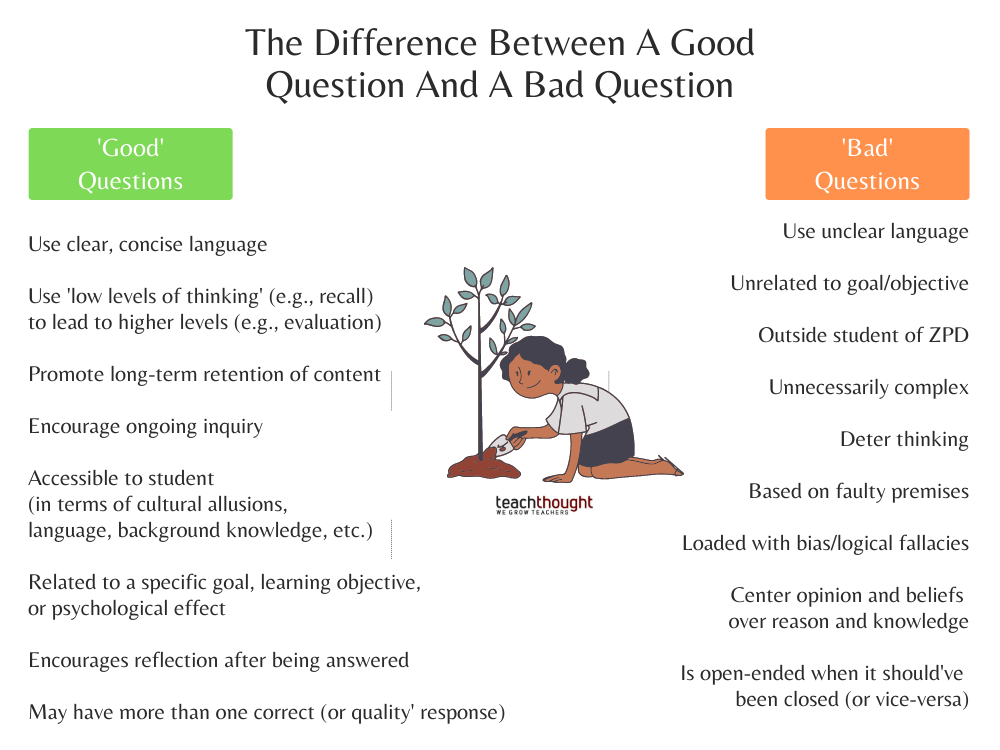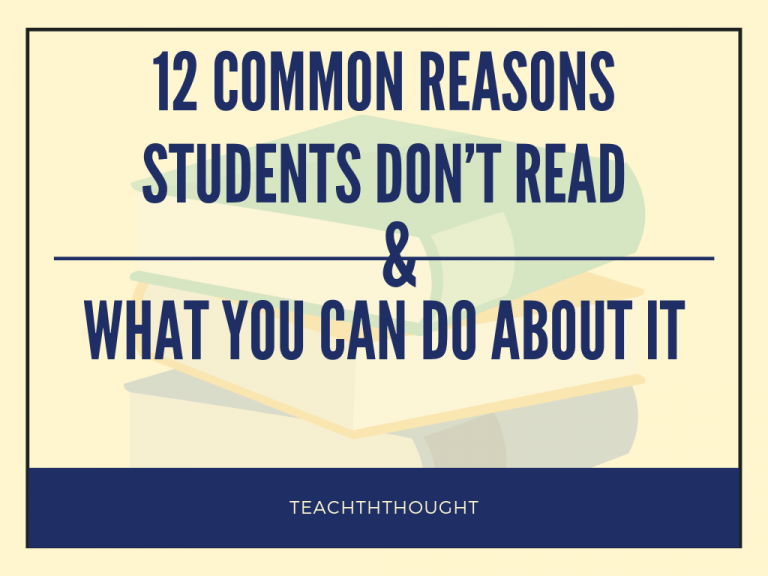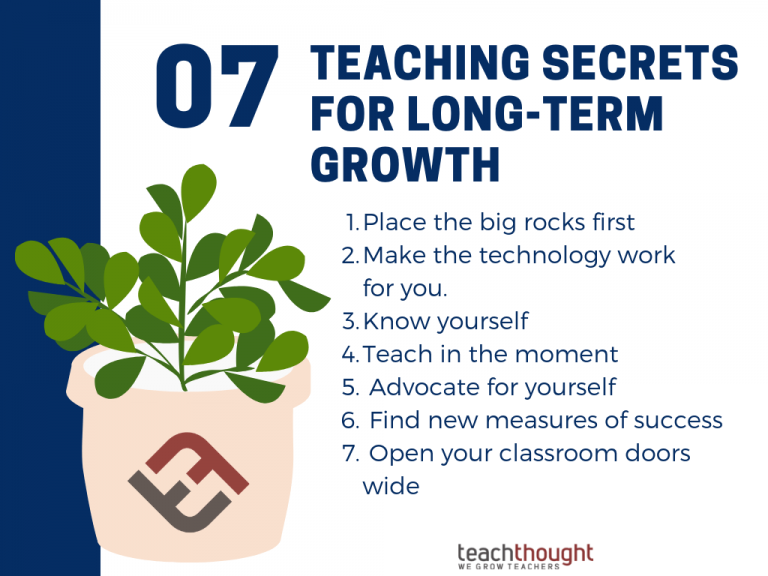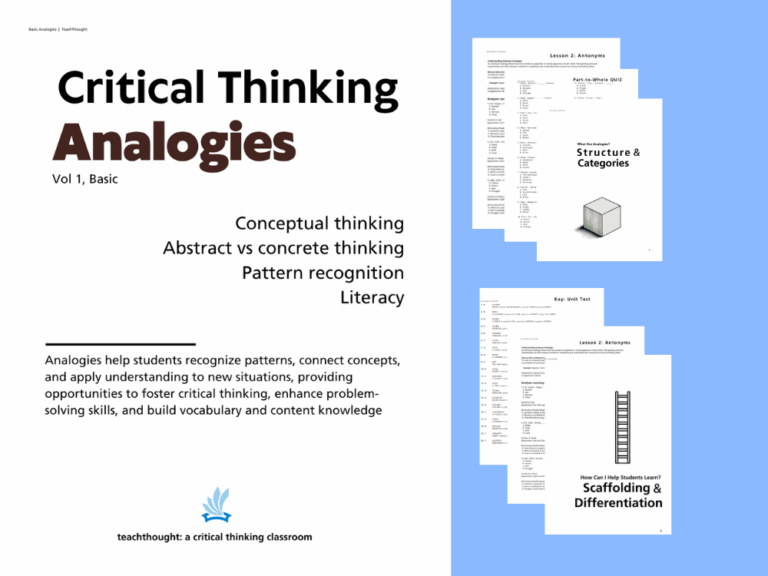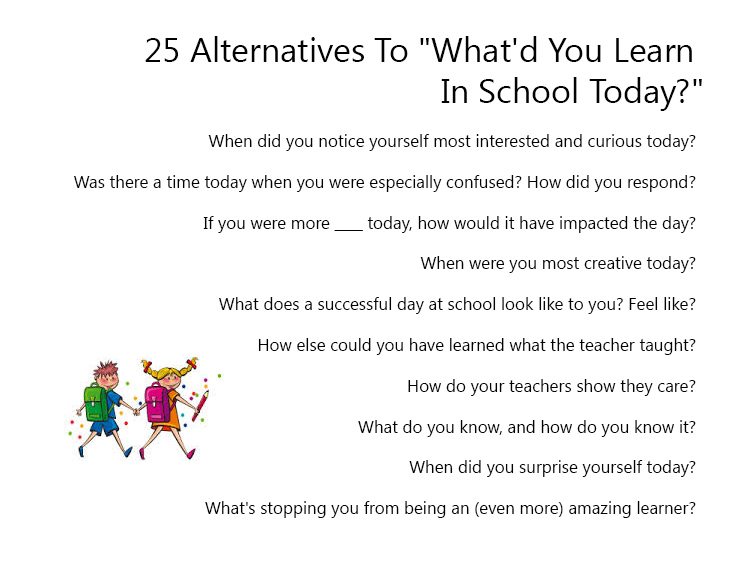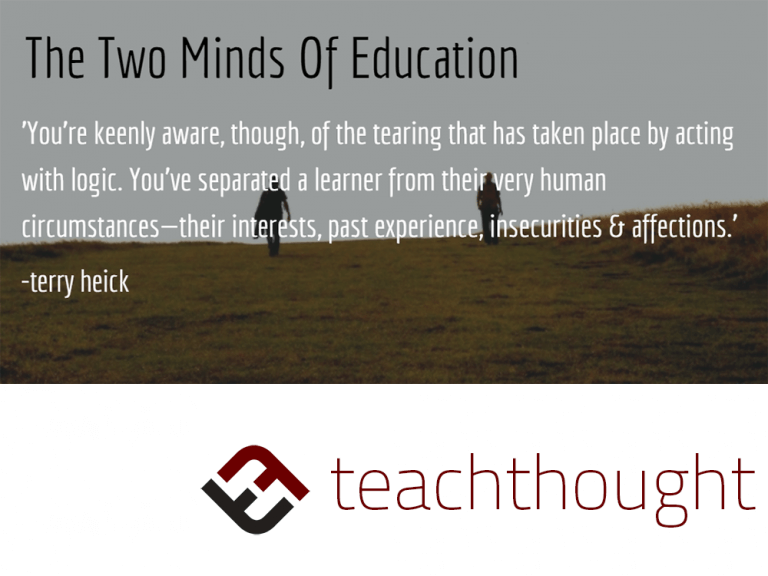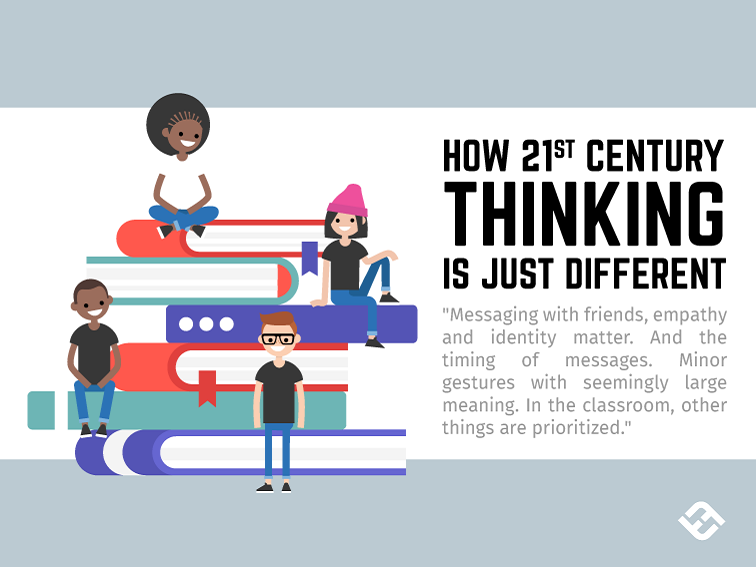
21st Century Thinking Is Just Different
by Terry Heick
This post was one of our earliest posts from Terry Heick in very early 2012. It has now been updated and republished.
In an era dominated by constant information and the desire to be social, should the tone of thinking for students be different?
After all, this is the world of Google. In this world full of information abundance, our minds are constantly challenged to react to data, and often in a way that doesn’t just observe, but interprets. Subsequently, we unknowingly spin everything to avoid any degree of dissonance.
As a result, the tone of thinking can end up uncertain or whimsical, timid or arrogant, or idolizing–and so, devoid of connections and interdependence. The internet and social media are designed to connect, and with brilliant efficiency, they do indeed connect—words and phrases, images and video, color and light, but not always to the net effect they might.
The nature of social media rests on identity as much as anything else—forcing subjectivity on everything through likes, retweets, shares, and pins. Instead, we might consider constant reflection guided by important questions as a new way to learn in the presence of information abundance.
But this takes new habits.
Information Abundance
There is more information available to any student with a smartphone than an entire empire would have had access to three thousand years ago.
In one form or another, that idea has been repeated quite a bit since the ‘Shift Happens’ videos were making their rounds on YouTube a few years ago, but it’s easy to miss how incredible this is. Truth may not change but information does–and in the age of social media, it divides and duplicates in a frenzied kind of digital mitosis.
New contexts—digital environments that function as humanity-in-your-pocket—demand new approaches and new habits. Specifically, new habits of mind.
Persisting.
Managing impulsivity.
Responding with awe.
Questioning.
Innovating.
Thinking interdependently.
And in an era of distinct academic standards and increasingly brazen technology, they are increasingly relevant.
Habits of Mind
Art Costa developed the 16 Habits of Mind as a response.
Bena Kallick, who worked with Costa on their development, explained, “It was the focus on dispositions–although students were often able to think analytically, for example, were they willing to do so? What is the attitude or disposition a person has for lending their mental activity to the question at hand? Those sorts of questions drove the development of HOM.”
This hints at the concept not so much of student motivation but student impetus.
Why learn?
It is curious why we continue to take this question for granted or to respond to it with adultisms—well-intentioned (and often accurate) notions of citizenship and ‘knowledge is power’ that can fail to resonate with learners in an era of like.
20th-Century Models In a 21st-Century Environment
If the 20th-century model was to measure the accuracy and ownership of information, the 21st century’s model is form and interdependence. The close thinking needed to grasp this is not beyond the reach of a typical middle school student, but it may be beyond their thinking habits.
Facing the barrage of information, task, and procedure they tend to on a daily basis in the classroom and on their video games and YouTube videos and social media, and text messages, students form digital habits as natural as a reflex. And like reflexes, these habits are a matter of protection and survival, especially as they seek out currencies and value in learning. Instinct kicks in, and they quickly establish what’s most important in a given context.
See also What Is Bloom’s Taxonomy?
Messaging with friends, empathy and identity matter. And the timing of messages. Minor gestures with seemingly large meanings. In the classroom, other things are prioritized–including adherence, compliance, and impersonal, external evaluation. This worked when there were no other options, but learning options today don’t just abound, they dwarf formal learning institutions in every way but clout with the power-holders—parents, teachers, deans, and curriculum designers.
How the Habits of Mind develop is not as simple as merely naming them. It is one thing to remind little Johnny to persist in the face of adversity. It is another to create consistent reasons and opportunities for him to do so, and nurturing it all with modeling, resources, and visible relevance.
If Johnny is to be rewarded, rather than label him right or wrong, good or bad, novice or distinguished, we can instead nurture the development of thinking habits.
Habits, by nature, are reflexive, accessible, and adaptable–not unlike knowledge. This is a can’t-miss point. Internalized and reflexive cognitive patterns that are called upon intrinsically, and transfer seamlessly.
Above all else, the 21st-century learner needs for self-knowledge and authentic local placement, two very broad ideas that come from patient thinking. Persistence. Managing Impulsivity. Responding with awe.
Conclusion
The shift towards the fluid, formless nature of information—thinking of information as a kind of perpetually oozing honey that holds variable value rather than static silhouettes and typesets that is right or wrong—is not a small one.
But in the face of media abundance, it’s increasingly urgent that we consider such a shift.
Old learning forms focused on the thinker rather than the thoughts, the source rather than the information, and correctly citing that source over understanding what made that information worth extracting. It was also critical for thinking in centuries past to ‘participate’ in a larger conversation. For Immanuel Kant to know what to add to Philosophy, he had to know what had already been said. Same with Albert Einstein and Science, Flannery O’Connor and Literature, Google and data, Mark Zuckerberg and Social Media.
The greater the abundance of accessible media, the greater the need to embed thought in important, enduring, and collaborative conversations that flash across the internet, then out into non-digital realms of universities, businesses, books, and coffee shop conversations.
The idea of constant reflection guided by important questions likely sounds too hippie for the data-driven generation that wants to see a bar graph for everything. Data is imperative, as is accuracy, but when we seek reductionist notions of “proficiency” over the habits of a person’s mind, we’ve kind of missed the point, yes?
The tone of thinking in the 21st century should not be hushed nor gushing, defiant nor assimilating, but simply interdependent, conjured to function on a relevant scale within a much larger human and intellectual ecology, one that exposes itself daily across instagram, YouTube, Netflix, twitter, facebook, and a billion smartphone screens.
How 21st-Century Thinking Is Just Different

